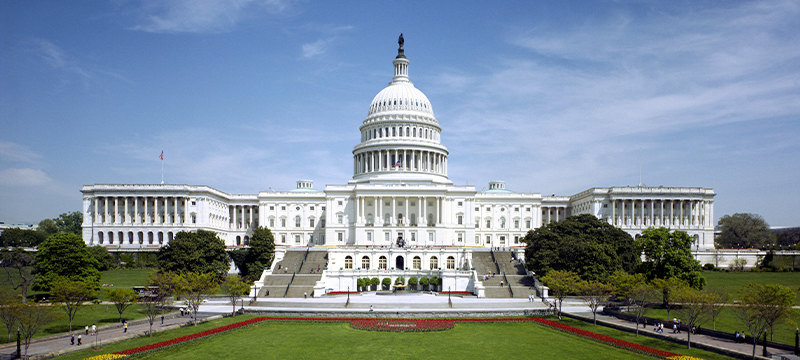Commercial real estate news releases from Avison Young
Quarterly and topical research insights to help your business gain competitive edge in commercial real estate.
Will the Federal Government Drive the Market out of Its Doldrums?

COVID-19 Impacts on Real Estate
These are unprecedented times, as the impacts of COVID-19 continue to evolve at a rapid pace. Our Metro DC Avison Young team is committed to you and remain available for discussions and advice as your partners. We hope you find these latest insights, our seventh analysis in this series, valuable.
In times of economic prosperity, Metro DC’s government-centric tenant base is slow to grow, especially in comparison to finance- and tech-heavy peer markets like New York or San Francisco. In times of crisis, however, the stable and even counter-cyclical federal government has softened the blows to the regional office market: primary U.S. office markets the past two downturns have posted rent declines averaging 13%, whereas rent declines throughout Metro DC have averaged just 6%.
In this note, we take a look at the fiscal state of the federal government, the federal leasing trends of the recent past, and how the pandemic could reshape those trends ahead.
From Dragging Anchor to Emergency Parachute
Over the past eight years, Metro DC’s reliance on the federal government has been weighing on the office market. Memorandums from President Obama in 2011 and 2013 directed the General Services Administration (GSA) to halt, and then begin reducing, the federal government’s leasing obligations. The result has been an 19% reduction in the government’s leased footprint since 2012 despite an 18% increase in federal agency budget authority over the same period. That equates to 10.7 million sf of occupancy losses for the region, or an average 1.3 million sf annually.
Just before that decline began, however, the federal footprint grew 14% across the region in the wake of the recession. As we’ve mentioned in prior notes, financial regulatory entities including the Securities Exchange Commission, Treasury and Federal Reserve grew dramatically in Washington, DC. Additionally, the American Recovery & Reinvestment Act of 2009 included provisions for healthcare ($155 billion) and infrastructure investments ($105 billion), among many other provisions, creating a need for increased headcount across stimulus beneficiaries such as Veterans Affairs and GSA, leading to more than 5 million sf of occupancy gains over a two-year period. The recent CARES Act is twice as large, and even broader in scope, as it seeks to address threats to both public health and the national economy.
Rethinking Federal Space Consolidation
Additions to agency programs are not the only way in which the current crisis could change the course of federal leasing. Much of the federal government’s recent space reduction was achieved by decreasing the amount of space devoted to each employee. Desk hoteling, shared workspaces and open floorplans allowed for dramatic reductions at certain agencies. The GSA’s own headquarters achieved a rate of 80 sf/employee, and most major leases are now targeting rates below 125 sf per employee. For comparison, industry standards typically range from around 150 sf at tech companies to more than 300 at law firms. At the peak of GSA’s rightsizing trend in 2015, its largest lease requirements were aiming to reduce space per employee by more than 20% on average.
After seven years of aggressive consolidation, however, most major federal agencies that can compress their space have already done so. Furthermore, densely packed, open floorplans are taking some of the blame for the rapid spread of the coronavirus. While it’s a near certainty that the private sector will increase the space between employees in the wake of the pandemic, it remains to be seen whether GSA will alter its guidance.
Investors Flock to Federally Leased Assets in Times of Trouble
As we reported two weeks ago, the regional investment sales market has begun to suffer as a result of the uncertainty and economic instability brought on by the pandemic, and sale volume in March was down 80% compared to March 2019. But just as federal leasing performs strongly during downturns, so do sales of office assets leased to the federal government.
Looking back at the two most recent downturns, the dot-com bubble burst and 2008 financial crisis, federally leased assets began to comprise an increasing share of regional sale volume shortly after the low point of each disaster. Between 2003 and 2005, that share grew from 12% to 22%. Between 2009 and 2012, it grew from 12% to 30%. With the number of private-sector office tenants unable to pay rent rising by the day, buildings leased to the world’s most creditworthy tenant will become increasingly attractive.
For more on the virus’ potential #CRE impacts, read the latest briefings on our
Avison Young Resource Center
